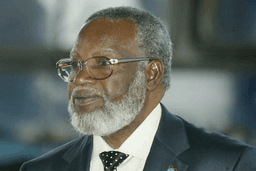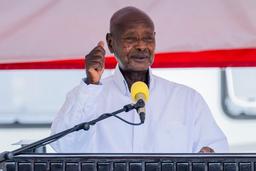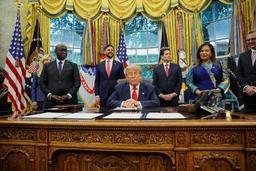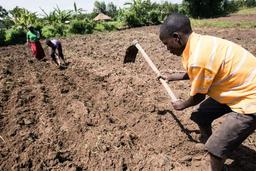Tunisia
Tunisia is a North African country on the Mediterranean, bordered by Algeria and Libya. Its capital is Tunis. Known for ancient Carthage, parts of the Sahara Desert, and beautiful beaches, Tunisia has a rich history and was the starting point of the Arab Spring. The population is mostly Arab-Berber, and Islam is the main religion.


12.35 million

North Africa

163,610 sq km

CET, UTC +1

Tunisian Arabic, French

Tunisian Dinar (TND)

Islam, Christianity, Judaism

Kais Saied (President)
Brief
Tunisia is a North African country located along the Mediterranean Sea, bordered by Algeria to the west and Libya to the southeast. It is the northernmost country in Africa and covers about 163,610 square kilometers.
The capital city is Tunis, known for its historic medina, vibrant markets, and close proximity to the ancient ruins of Carthage. Tunisia has a diverse landscape that includes Mediterranean beaches, fertile plains, and parts of the Sahara Desert in the south.
Historically, Tunisia was home to the powerful Carthaginian Empire before becoming part of the Roman Empire. It later fell under Arab, Ottoman, and French rule before gaining independence in 1956. Tunisia is considered one of the most progressive Arab nations in terms of women’s rights and education. It was also the birthplace of the Arab Spring in 2010–2011.
The population is mostly Arab-Berber, and Islam is the dominant religion. The country has a mixed economy with key sectors including agriculture, tourism, textiles, and petroleum. Tunisia blends modernity with rich cultural heritage, attracting tourists to its beaches, desert landscapes, and archaeological sites.
Photos




National Anthem
Cultural Life
Cultural milieu
Tunisia, located at the northern tip of Africa along the Mediterranean Sea, has long been a crossroads of civilizations and cultures. For centuries, its coastal cities connected trade routes across the Mediterranean, attracting influences from Phoenicians, Romans, Byzantines, Arabs, and Ottomans. The ancient city of Carthage remains a symbol of Tunisia’s rich history. In the late 19th century, French colonial rule shaped the country’s political, economic, and educational systems until Tunisia gained independence in 1956. Today, Tunisia’s cultural identity is deeply rooted in Arab-Berber heritage, with Arabic as the official language and French widely spoken. Alongside this, there is growing recognition and preservation of Berber languages and traditions, as communities strive to maintain their unique cultural heritage throughout the country.
Daily life and social customs
In Tunisia, social life centers around family and community, with gatherings often held at homes or local cafés. Football is the most popular sport, with many Tunisians passionately following matches and supporting local clubs. In cities like Tunis and Sfax, people enjoy visiting markets, restaurants, and cultural venues for leisure. Along the Mediterranean coast, beaches and seaside towns provide popular spots for relaxation, swimming, and enjoying fresh seafood, especially on weekends and holidays.





Cuisine
Tunisian cuisine is a flavorful blend of Mediterranean and North African influences, known for its bold spices and fresh ingredients. Staples include couscous, brik (a thin pastry filled with egg or meat), and hearty stews like chakchouka (eggs poached in spicy tomato sauce). Harissa, a spicy chili paste, is a key condiment used to add heat to many dishes. Fresh seafood is abundant along the coast, often grilled or served in rich sauces. Meals are usually shared communally, reflecting Tunisia’s strong emphasis on family and hospitality.




Music
Tunisian music is a rich fusion of Arab, Berber, and Mediterranean influences. Traditional styles like Malouf - an Andalusian classical music form - play a key role in the country’s cultural heritage. Folk music featuring rhythmic drumming and poetic singing reflects Tunisia’s diverse regional identities. Modern Tunisian music blends traditional sounds with contemporary genres such as pop, rock, and hip-hop, creating a vibrant music scene enjoyed by many across the country.
Malouf (Traditional Andalusian-Tunisian Classical Music)
Description:
Malouf is Tunisia’s classical music heritage, rooted in Andalusian music brought by Muslims and Jews fleeing Spain in the 15th century. It’s deeply ceremonial and often played during weddings or national celebrations.
Stambeli
Description:
A trance-inducing ritual music of spiritual possession, originally from Sub-Saharan slaves in Tunisia. It combines Gnawa-like rhythms, traditional instruments (like gumbri), and religious chants.
Tunisian Rap / Urban Music
Description:
Modern genre that exploded post-2011 revolution, using hip-hop as a form of protest and social commentary. Tunisian rap is known for its rawness and focus on political and daily struggles.
The arts
Tunisian literature is deeply rooted in Arabic literary traditions, enriched by centuries of Arab, Berber, and Mediterranean influences. While classical poetry and oral storytelling remain important, modern Tunisian literature includes novels, plays, and essays often written in Arabic and French. Notable Tunisian writers like Abdelwahab Meddeb and Hele Beji have gained international recognition. Today, Tunisian authors explore themes such as identity, history, social change, and the country’s post-colonial experience through a blend of traditional and contemporary styles.





People
Ethnic groups
Tunisia’s population is largely Arab-Berber, resulting from centuries of Arab migration and cultural blending with the indigenous Berber (Amazigh) peoples who originally inhabited the region. The Berbers primarily live in southern and mountainous areas like the Matmata and Djerid regions, where they maintain distinct languages (such as Tamazight) and cultural traditions including crafts, music, and festivals.
The Arab influence became dominant after the Arab conquests in the 7th century, shaping the country’s language, religion, and identity. Besides the Arab-Berber majority, Tunisia has small minorities of Europeans, mostly descendants of French, Italian, and Maltese settlers who arrived during the colonial era. These communities are mostly urban and have contributed to Tunisia’s cultural and economic diversity.
Tunisia’s society is relatively ethnically homogeneous compared to other North African countries, but it celebrates a rich cultural tapestry that reflects its history as a crossroads of civilizations.

Religions
Islam is the predominant religion in Tunisia, embraced by about 99% of the population, mainly following Sunni traditions. It plays a central role in shaping the country’s cultural, legal, and social frameworks. Although Islam is the official state religion, Tunisia is known for practicing a relatively moderate and tolerant form of the faith, balancing religious values with secular governance.
The 2014 Tunisian constitution guarantees freedom of religion, ensuring that minority faiths can practice openly. Small Christian communities exist, mostly made up of expatriates and some Tunisian converts. Tunisia also hosts one of the oldest Jewish communities in the world, primarily centered on the island of Djerba. Though the Jewish population has diminished over time, their synagogues and traditions remain important cultural symbols.
Religious festivals such as Eid al-Fitr, Eid al-Adha, and Mawlid (the Prophet Muhammad’s birthday) are celebrated nationwide, often accompanied by family gatherings, special meals, and public events. These occasions serve as important cultural moments that bring together Tunisians from diverse backgrounds in shared celebration.

Settlement patterns
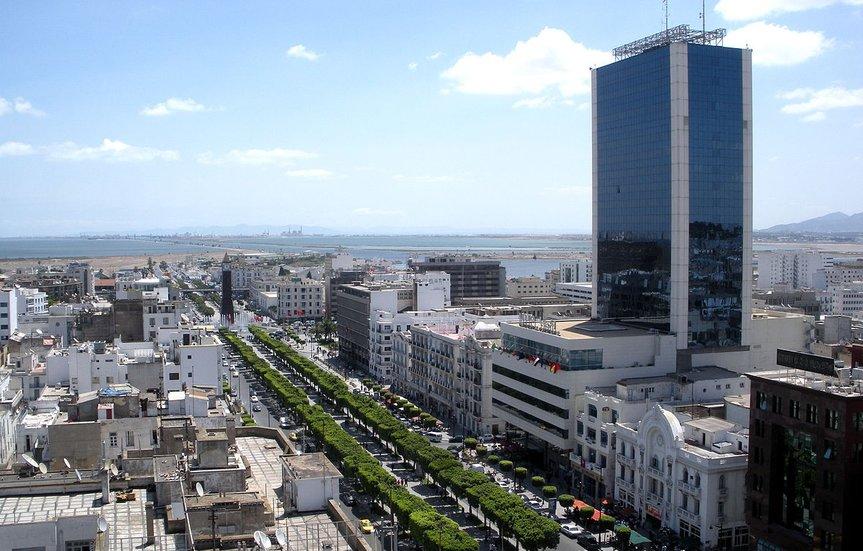
Nucleated Settlements
Description:
These are densely populated areas where homes and buildings are clustered together, often around a central feature like a mosque, marketplace, or water source.
Examples: Found in towns and cities such as Tunis, Sfax, and Kairouan, where people live close together for trade, security, and social reasons.
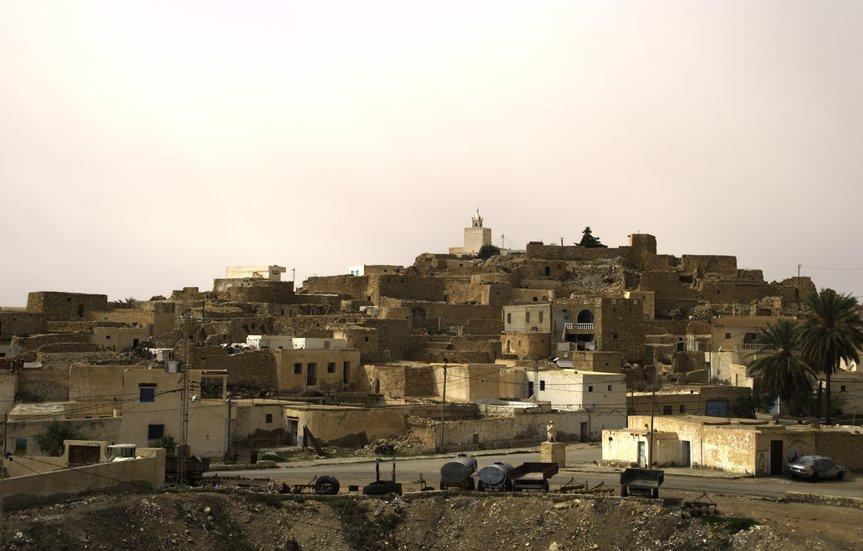
Linear Settlements
Description:
These develop along transportation routes such as roads, rivers, or coastlines. Buildings and settlements are arranged in a line pattern.
Examples: Common along Tunisia's Mediterranean coast, especially in areas like Gabès and Bizerte, where settlements align with roads or water sources.
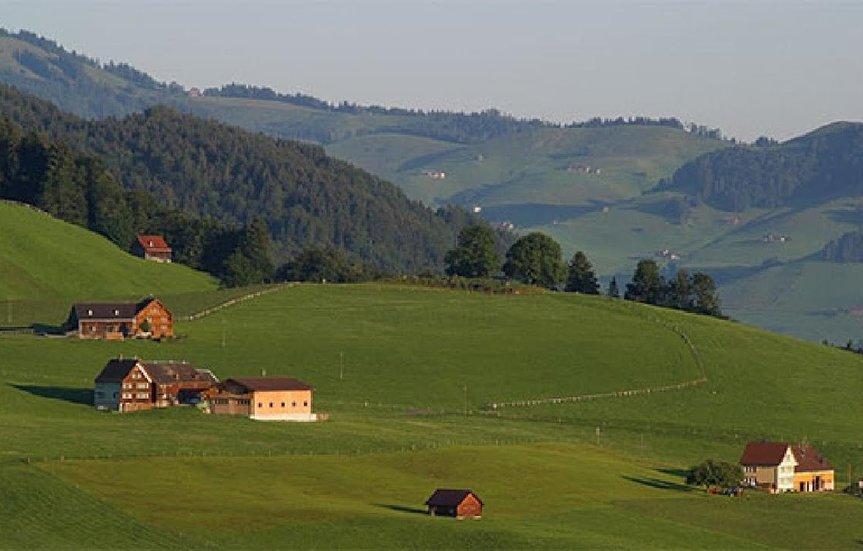
Dispersed Settlements
Description:
In these areas, homes and farms are spread out over a large area with low population density. People live farther apart, often relying on agriculture.
Examples: Found in the inland and southern arid regions like the Sahara edges, where harsh environmental conditions lead to scattered, isolated homesteads.
Demographic trends
Tunisia has a relatively mature population with a median age around 33 years, reflecting lower birth rates and longer life expectancy compared to many other African countries. About 24% of the population is under 15 years old, while the majority—approximately 65%—are of working age (15–64 years). Around 11% of Tunisians are aged 65 and above, signaling a gradual aging trend.
The population growth rate is modest at about 0.7% annually, influenced by urbanization, improved healthcare, and family planning efforts. Over 70% of the population now lives in urban areas, particularly in cities like Tunis, Sfax, and Sousse, shaping the country’s social and economic development priorities.
These demographic shifts pose challenges, including supporting an aging population while maintaining a productive workforce. Tunisia’s policies increasingly focus on healthcare, employment, and social services to address these evolving needs.

Touristic Cities
Tunis
The capital city of Tunisia, Tunis blends modern life with ancient history. It’s home to the bustling Medina (a UNESCO site), the famous ruins of Carthage, and the elegant coastal village of Sidi Bou Said.
Sousse
Located on the Mediterranean coast, Sousse is a favorite for beach lovers and history buffs. Its fortified Medina and ancient Ribat reflect its rich past, while Port El Kantaoui offers modern resorts and marina life.
Djerba
A scenic island in southern Tunisia, Djerba is known for its white-sand beaches, traditional markets, and the historic El Ghriba Synagogue. Its laid-back vibe and cultural charm make it a unique escape.
Accomodations
Guest houses
Guest houses in Tunisia offer a cozy and authentic way to experience local culture, often run by families in traditional homes. They provide personalized hospitality, comfortable rooms, and homemade meals featuring Tunisian cuisine. Popular in cities like Tunis, Sousse, and historic areas such as the Medina, guest houses are a charming alternative to hotels, giving visitors a warm, welcoming atmosphere and a chance to connect with local life.




Hotels and Resorts
Tunisia offers a wide range of hotels, from luxury resorts along the Mediterranean coast to budget-friendly options in urban centers. Popular tourist cities like Tunis, Hammamet, Sousse, and Djerba feature many international hotel chains as well as boutique hotels. These hotels often provide amenities such as pools, spas, and conference facilities, catering to both leisure travelers and business visitors. Tunisia’s hotel industry is well-developed, supporting the country’s vibrant tourism sector.




Campings
Camping in Tunisia offers a unique way to explore its diverse landscapes, from Mediterranean beaches to the vast Sahara Desert. Popular camping spots include coastal areas like Hammamet and Djerba, as well as desert regions near Douz, where visitors can experience traditional Berber tents and desert excursions. Campsites range from basic facilities to more organized “glamping” options, appealing to adventurers and nature lovers seeking an authentic outdoor experience.




Requirements for Visa
Requirements for Visa
- Valid passport with at least 6 months validity.
- Completed and signed visa application form.
- Recent passport-sized photographs meeting requirements.
- Proof of round-trip flight tickets.
- Hotel or accommodation booking confirmation.
- Bank statements or proof of financial means.
- Valid travel insurance covering the trip.
- Documents supporting purpose of visit (invitation, employer letter, etc.).
- Receipt of visa application fee payment.
At the time of visa issuance, please provide the following documents
- Original passport for visa stamping.
- Visa fee payment confirmation (if not paid earlier).
- Appointment confirmation or call-up letter.
- Receipt of biometric data submission (if applicable).
- Additional documents requested by the embassy (if any).
- Proof of identity (ID card or driver’s license).
- Return to collect visa or provide a self-addressed envelope for delivery.
Economy of Tunisia
Agriculture, forestry, and fishing
Agriculture is a vital sector in Tunisia, employing a significant portion of the population and contributing notably to the economy. The country’s Mediterranean climate supports the cultivation of olives, cereals (like wheat and barley), citrus fruits, dates, and vegetables. Olive oil production is especially important, with Tunisia ranking among the world’s top producers and exporters.
Forestry in Tunisia is limited due to the country’s mostly arid and semi-arid environment, but there are areas of cork oak and pine forests, mainly in the northern and western regions. These forests provide resources like timber and cork, and efforts are ongoing to combat desertification and promote sustainable land management.
Fishing is a traditional activity along Tunisia’s long Mediterranean coastline. The country harvests a variety of fish and seafood, including sardines, octopus, and shellfish. While fishing supports local communities and contributes to exports, the sector faces challenges like overfishing and the need for modernization to improve sustainability and economic returns.

Resources and power
Tunisia is endowed with valuable natural resources, including petroleum, phosphates, iron ore, and salt, with phosphate mining playing a crucial role in the economy and exports. The country’s energy production primarily relies on natural gas and oil, powering most of its thermal electricity plants. In recent years, Tunisia has been investing in renewable energy projects, particularly solar and wind, to diversify its energy mix and reduce reliance on fossil fuels. Efforts are also underway to improve the national power grid and expand electricity access to rural and remote areas, supporting economic growth and sustainability goals.

Manufacturing
Tunisia’s manufacturing sector is a key part of its economy, contributing around 15% of GDP. It includes diverse industries such as textiles and apparel, electronics, food processing, and chemicals. The textile industry is well-established, especially in producing garments like lingerie and swimwear for export to Europe. Electronics manufacturing employs many workers and focuses on automotive parts and household appliances. The food processing sector benefits from Tunisia’s agricultural products, notably olive oil and dates, while the chemical industry, fueled by phosphate production, plays a major role in fertilizer exports. Although the sector faces challenges like limited financing for small businesses and infrastructure needs, Tunisia is actively pursuing industrial innovation and sustainability to boost competitiveness and growth.

Finance
Tunisia’s financial sector plays a crucial role in the economy, with a banking system made up of public and private banks that manage most financial activities. The sector faces challenges such as high non-performing loans and the need for modernization, but efforts are ongoing to improve financial stability and expand digital banking services. Tunisia’s fiscal situation is strained, marked by persistent budget deficits and rising public debt, prompting government measures like loans and proposed reforms to the Central Bank’s role. Financial inclusion remains limited, with less than 40% of adults holding bank accounts, though digital payment solutions are growing to increase access. Overall, Tunisia is working to strengthen its financial infrastructure amid economic challenges.
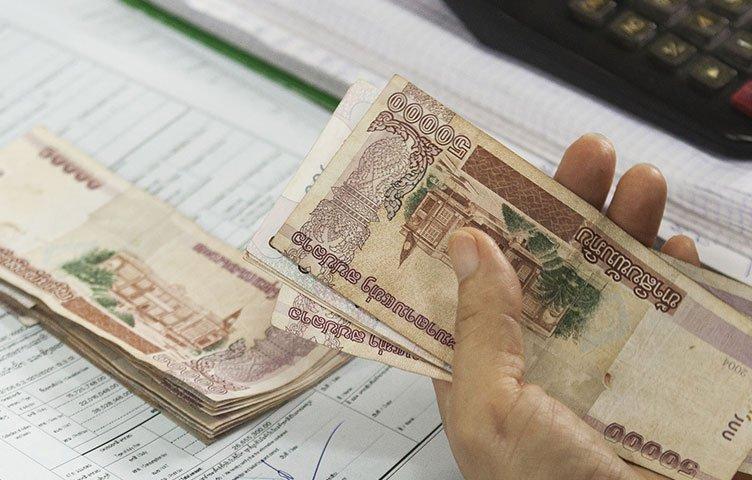
Trade
Tunisia’s trade sector is characterized by a persistent trade deficit, driven largely by rising energy imports and fluctuating exports. Key export products include agro-food items like olive oil, textiles, and mechanical and electrical goods, though recent years have seen declines in energy exports and some agricultural products due to poor harvests. The country imports mainly energy products, capital goods, and consumer goods, contributing to the trade imbalance. Tunisia’s largest trade partner is the European Union, which accounts for over half of its trade volume, followed by strong ties with countries like France, Germany, and Italy. However, significant trade deficits exist with China and Russia. The energy sector remains the biggest factor in the trade deficit, prompting Tunisia to focus on diversifying its economy and improving export performance.
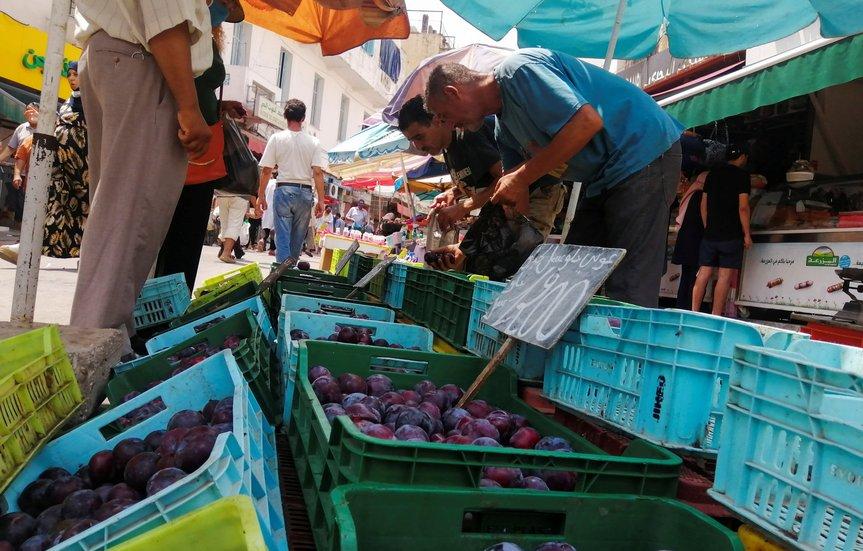
Labour and taxation
Tunisia’s labor market features a workforce of about 4.1 million people, with a participation rate near 46%. Unemployment remains high at around 16%, especially among youth and university graduates, and the informal sector accounts for nearly half of total employment. On the taxation side, Tunisia applies progressive personal income tax rates up to 35%, a corporate tax rate generally at 15%, and a value-added tax of 19%. Recent government plans aim to increase taxes on high earners and certain corporations while easing the burden on low-income groups to address fiscal challenges and promote equity.
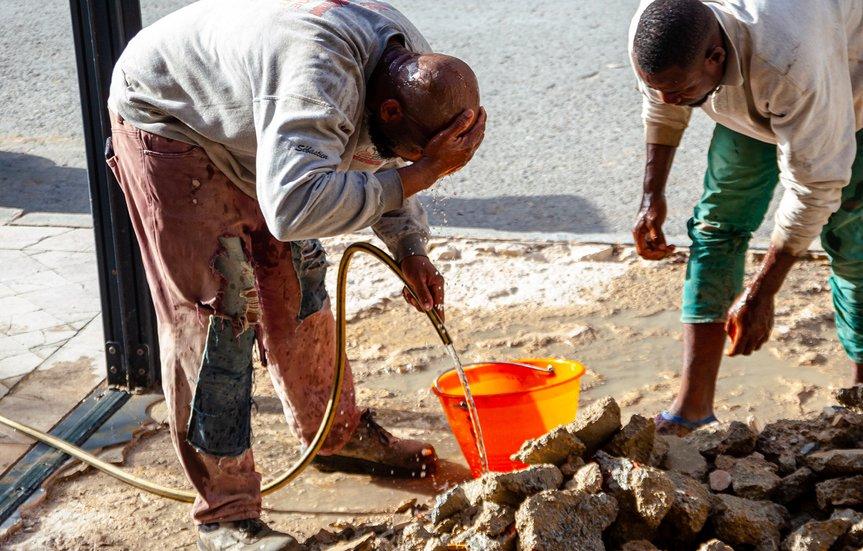
Transportation and telecommunications
Tunisia has a growing transportation network featuring urban rail systems like the Tunis Light Metro and the historic Tunis-Goulette-Marsa commuter line, alongside an expanding motorway system connecting major cities. Public transport includes buses and shared taxis, although rural areas still face challenges with service quality. On the telecommunications front, Tunisia enjoys high mobile penetration with three main providers offering extensive mobile, fixed line, and broadband services. Recent advancements include the rollout of IPv6 and preparations for 5G, alongside initiatives to improve internet access in rural regions through satellite technologies. Together, these sectors support Tunisia’s economic development and digital transformation.

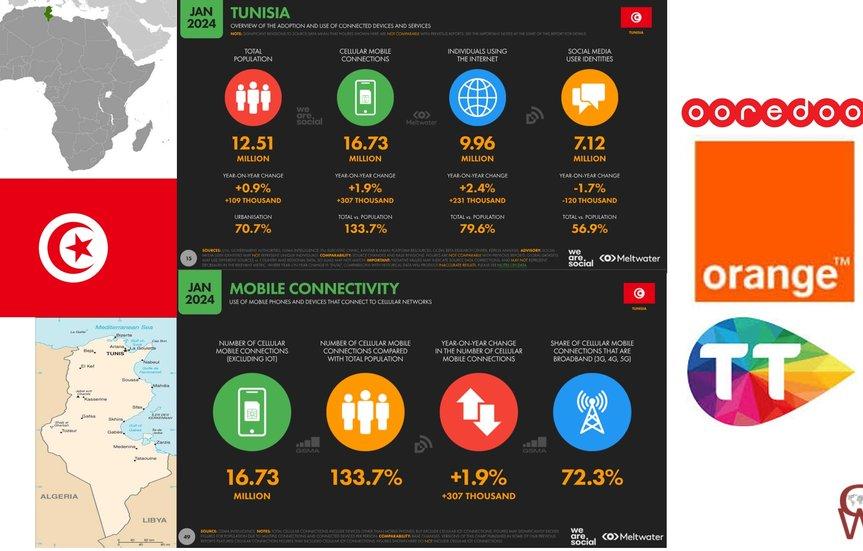
Latest News in Tunisia
Politics
The first president of independent Namibia, Sam Nujoma, has died at the age of 95 in the capital Windhoek, the country's current leader has announced.
Politics
Ugandan President Yoweri Museveni has officially announced his intention to seek re-election in the 2026 presidential race, extending his nearly four-decade rule. Museveni, who has been in power since 1986, is once again positioning himself as the steady hand guiding Uganda through challenges. His decision has sparked mixed reactions, with supporters praising his leadership and longevity, while critics call for fresh leadership and political reform. As the nation looks ahead to the 2026 elections, Uganda braces for a heated political contest.
Politics
Peace Agreement with DRC Rwanda and the Democratic Republic of Congo (DRC) signed a U.S.-brokered peace deal aimed at ending conflict and promoting regional trade. Rwanda agreed to stop supporting armed groups like M23 rebels, though it denies involvement. Tensions remain, and President Kagame is cautious about whether the peace will last.
Wildlife
Tanzania has announced that all foreign tourists visiting Mainland Tanzania will be required to purchase a mandatory travel insurance policy upon arrival, beginning January 2026. The new regulation, issued by the Ministry of Finance on July 4, 2025, is part of the government reforms in the country’s 2025/26 financial year agenda. According to the notice, the measure will apply to all non-citizens, with the exception of visitors from countries that are part of the East African Community (EAC) and the Southern African Development Community (SADC). Citizens from these regions will continue to be exempt from the requirement.
Environment
In light of the growing food insecurity crisis across many African nations, heads of state and agriculture experts gathered in Nairobi, Kenya, this week to discuss solutions to address food shortages, especially in regions severely affected by climate change, political instability, and economic challenges. The two-day summit, titled “Agriculture and Climate Resilience: A Pan-African Strategy”, brought together government officials, NGOs, scientists, and international organizations to create a comprehensive strategy to improve agriculture, nutrition, and sustainable food systems across the continent.
Tech & Science
In 2025, Artificial Intelligence (AI) isn’t just a futuristic buzzword - it’s the secret weapon behind some of the world’s most successful content creators. From bloggers and YouTubers to podcasters and marketers, AI-powered tools are changing the way we brainstorm, write, design, and edit. If you've ever struggled with writer’s block, lacked design skills, or wished for faster content creation - AI might be your best assistant yet. Here’s how AI is revolutionizing the creative industry and how you can use it to boost your projects.
